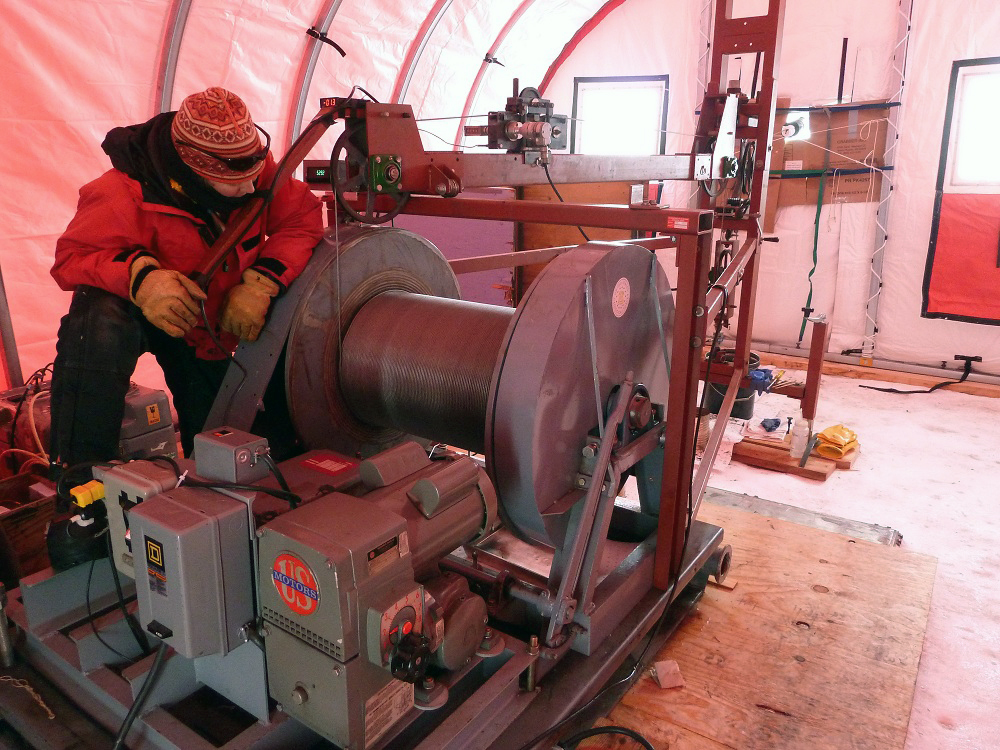News
End of Season Field Reports
2011-2012 Field Season
Climatology, Meteorology, and Microbial Metabolism in Ice with Dust Loggers and Fluorimetry (I-122-M)
NSF-OPP supported
PI: P. Buford Price (University of California - Berkeley)
Field Team:
Ryan Bay1, Gary Clow2, Frank Urban2, Elizabeth Morton3
1 University of California - Berkeley
2 U.S. Geological Survey
3 Ice Drilling Design and Operations
Field Season Overview:
We made a total of three optical logs at WAIS Divide with the laser dust logger, taking approximately 10-12 hours for each round trip profile of the 3400 m borehole. The logger provides a high-resolution measurement of particulate stratigraphy for reconstructing detailed paleoclimate records. In bubbly ice the logger signal responds to absorption by thin volcanic ash layers; in clear ice the back-scattering signal is a tracer for both ash and continental mineral dust.
We made two logging runs before hole deepening, on December 6 and again on December 8. We detected hundreds of ash layers and image quality was comparable to logs made in hot-water boreholes. After the drill team completed coring to the final depth, we made a third roundtrip log of the bottom ~300 meters on January 2. We were able to date the borehole back to ~62 thousand years, through comparison with dust logs taken at South Pole and Dome C. The borehole fluid was remarkably transparent prior to hole deepening, which provided superb conditions for imaging dust and volcanic horizons with millimeter depth resolution. The deepening operation likely increased turbidity of the borehole fluid and image quality in the third log was notably degraded.
Support from the science team, drillers and camp staff was excellent.

Fig. 1: IDDO driller Elizabeth Morton assists with borehole logging operations. Photo: Kristina Slawny

